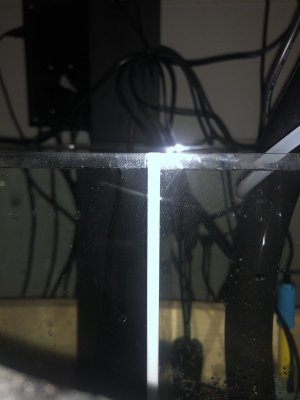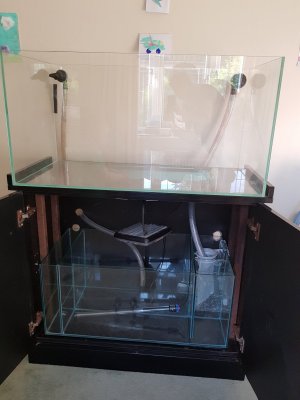Navigation
Install the app
How to install the app on iOS
Follow along with the video below to see how to install our site as a web app on your home screen.
Note: This feature may not be available in some browsers.
More options
You are using an out of date browser. It may not display this or other websites correctly.
You should upgrade or use an alternative browser.
You should upgrade or use an alternative browser.
How to protect from overflowing sump?
- Thread starter Sarah1990
- Start date
- Tagged users None
I’ve actually been researching this and you can install a non return valve (the ball version I believe is best for reliability) into the down pipes and you can also get anti siphon caps to fit at the top of the return pipe
There are different ways of doing it but you need one that is reliable and not going to cause issues including maintenance
There are different ways of doing it but you need one that is reliable and not going to cause issues including maintenance
most people figure out how much water is going to back siphon from the tank ( in a power outage) and just leave enough room to handle that amount.
Check this out . Can you see the water level that is where mine ends up after a power outage..... had me sweating for sure!! Lol

- Joined
- Aug 5, 2017
- Messages
- 1,493
- Reaction score
- 1,881
most people figure out how much water is going to back siphon from the tank ( in a power outage) and just leave enough room to handle that amount.
This is exactly what I do. Ball valves can fail, and if they do you are looking at a real mess. Leaving enough room in your sump to hold the additional water is the easiest and safest way to do it.
-Leave all the pumps off
-start filling the main tank. Keep filling until the water starts running down the return and overflow
-stop filling when the sump level is about an inch (or whatever level you're comfortable with) from the top of the sump
-Wait to be sure all the water has drained from the pipes and overflow. You might be surprised how much water is hiding in the plumbing.
-Start the pumps and let it run for a half hour to fully stabilize
-Mark the sump water level, and the return chamber water level. That is your maximum safe operating water level.
One-way or check valves are NOT safety devices or flood prevention devices. I use one on my system for the simple reason that it limits the splashing and air bubbles pushed back into the tank when the pump restarts, since the line is mostly full.
-start filling the main tank. Keep filling until the water starts running down the return and overflow
-stop filling when the sump level is about an inch (or whatever level you're comfortable with) from the top of the sump
-Wait to be sure all the water has drained from the pipes and overflow. You might be surprised how much water is hiding in the plumbing.
-Start the pumps and let it run for a half hour to fully stabilize
-Mark the sump water level, and the return chamber water level. That is your maximum safe operating water level.
One-way or check valves are NOT safety devices or flood prevention devices. I use one on my system for the simple reason that it limits the splashing and air bubbles pushed back into the tank when the pump restarts, since the line is mostly full.
Last edited:
Similar threads
- Replies
- 26
- Views
- 378
- Replies
- 16
- Views
- 469
- Replies
- 6
- Views
- 564
- Replies
- 1
- Views
- 136
- Replies
- 4
- Views
- 101















